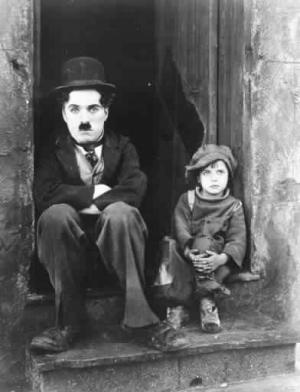In the 1924 silent film Three Weeks, Conrad Nagel tenderly picks up Aileen Pringle to carry her into the bedroom.
Lip readers noted that she appears to be saying, “If you drop me, you bastard, I’ll break your neck.”
In the 1924 silent film Three Weeks, Conrad Nagel tenderly picks up Aileen Pringle to carry her into the bedroom.
Lip readers noted that she appears to be saying, “If you drop me, you bastard, I’ll break your neck.”

“Failure is unimportant. It takes courage to make a fool of yourself.” — Charlie Chaplin
The King and I has never been performed in Thailand.
Paul McCartney’s working lyrics for “Yesterday”:
Scrambled eggs
Have an omelette with some Muenster cheese
Put your dishes in the wash bin please
So I can clean the scrambled eggs
Join me do
There’s a lot of eggs for me and you
I’ve got ham and cheese and bacon too
So go get two and join me do
Fried or sunny side
Just aren’t right
The mix-bowl begs
Quick, go get a pan, and we’ll scramble up some eggs, eggs, eggs, eggs
Scrambled eggs
Good for breakfast, dinner time or brunch
Don’t buy six or twelve, buy a bunch
And we’ll have a lunch on scrambled eggs
“The song was around for months and months before we finally completed it,” John Lennon remembered. “We made up our minds that only a one-word title would suit; we just couldn’t find the right one. Then one morning Paul woke up and the song and the title were both there, completed. I was sorry in a way, we’d had so many laughs about it.”
By coincidence, John Ritter died in the same hospital in which he was born.
ERIC CLAPTON is an anagram of NARCOLEPTIC.
Cary Grant once received a telegram from a journalist:
HOW OLD CARY GRANT?
He wired back:
OLD CARY GRANT FINE. HOW YOU?
Hollywood’s Walk of Fame actually contains two stars marked Harrison Ford.
The first is for a silent film actor who retired in 1932.
He’s little remembered today — so far his namesake has outgrossed him by $5.6 billion.
“I’d rather be dead than singing ‘Satisfaction’ when I’m 45.” — Mick Jagger
In the film Lifeboat, the action is set entirely in a small boat. This left director Alfred Hitchcock momentarily at a loss how to make his traditional cameo appearance.
Finally, inspired by a recent diet, he hit on a solution — Hitchcock can be seen briefly in a newspaper advertisement for “Reduco, the Obesity Slayer.”